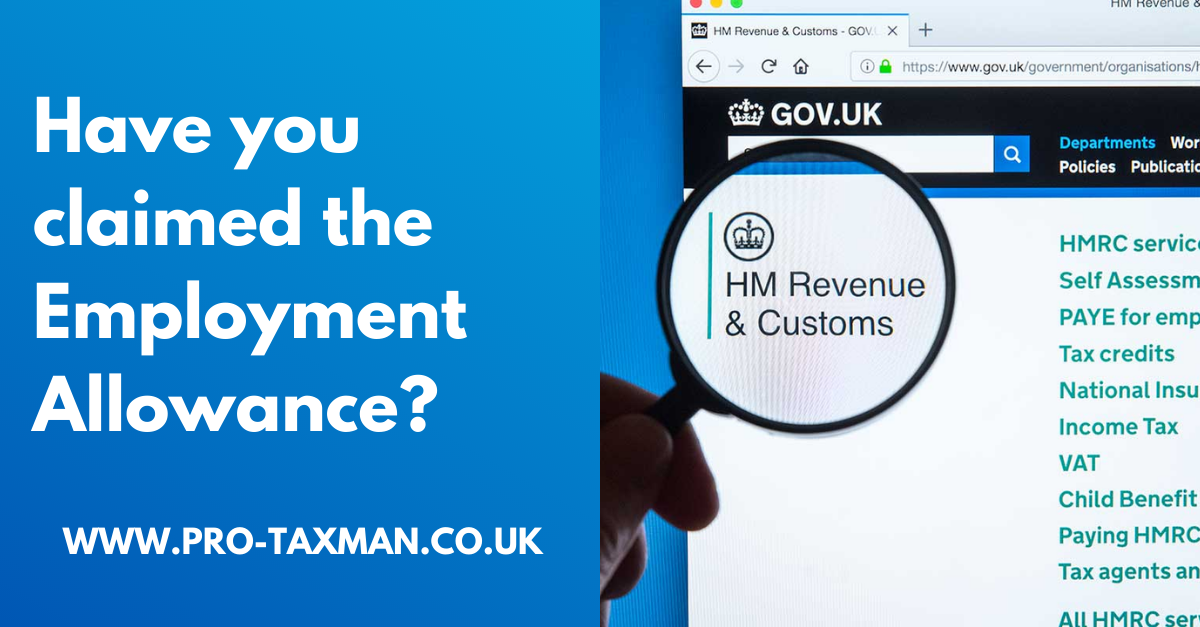The Employment Allowance is a National Insurance allowance that eligible employers can claim and set against their secondary Class 1 National Insurance liability.
The allowance is set at £4,000 for 2021/22 (capped at the employer’s secondary National Insurance liability for the year where this is lower).
Can you claim it?
Not all employers are able to claim it. At the lower end of the scale, it is not available to companies where the sole employee is also a director. This means that most personal companies cannot benefit. However, a company with more than one employee or one where the sole employee is not a director can benefit from the allowance.
It should be noted here that HMRC guidance stipulates that the allowance is not available if there is only one employee ‘paid above the National Insurance secondary threshold’ and that employee is also a director. However, there is no requirement in the legislation for employees to be paid above the secondary threshold to be counted, and the allowance is (in accordance with the legislation) available unless all the payments of earnings in the year are made to the same person and that person is a director. Thus, companies with at least two employees at some point in the tax year should be eligible for the allowance.
At the other end of the spectrum, companies whose Class 1 National Insurance liability for the previous tax year is £100,000 or more do not qualify for the allowance.
Impact of claim on optimal salary
The availability or otherwise of the employment allowance determines the optimal salary level in a family company scenario. Assuming that the personal allowance is not used elsewhere, for 2021/22, the optimal salary where the employment allowance is not available is one equal to the primary threshold of £9,568. However, where the employment allowance is available, the optimal salary for 2021/22 is equal to the personal allowance of £12,570.
Not too late to claim
The employment allowance has to be claimed through the payroll. If a claim has not yet been made for 2021/22 it is not too late.
In a family company scenario where the alternative arrangements are used for National Insurance (such that NIC is assessed each pay period as for other employees, rather than on an annual basis), it may be easier to pay the director a salary equal to the secondary threshold of £737 per month for the first 11 months of the tax year. This prevents the need to pay any National Insurance over to HMRC. If the company is eligible to claim the employment allowance, they can claim it in March and make a final payment for the tax year of £4,463 to take pay up to £12,570, the level of the personal allowance for 2021/22 (£12,570 – (11 x £737) = £4,463). There will be some primary Class 1 National Insurance on earnings for the year above the primary threshold of £9,568 The primary NIC bill is £360.24 ((£12,570 – £9,568) @12%). However, this is offset by the corporation tax savings on the higher salary at 19%.
The allowance can be claimed after the end of the year if a claim is overlooked. In this situation, you can ask HMRC to use it to pay other tax that the company may owe, including VAT and corporation tax if you do not owe any PAYE and National Insurance. If you have no tax to pay, you can ask for a refund.
You cannot carry forward any unused amount of the allowance to later tax years. If your secondary NIC bill is less than £4,000, the employment allowance is capped at this level.
Need professional accounting service or accounting advice? Contact us to book a 15-min Free Consultation with us today.
To find out more please follow us on Facebook, Twitter, or LinkedIn. Feel free to contact us on 0333 006 4847 or request a call back by texting 075 6464 7474

